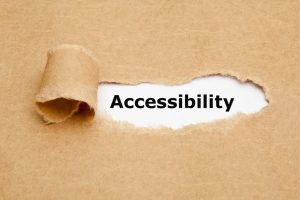
By Colorado Review Editorial Assistant ML Thomas
Since arriving at CSU, I have noticed something that makes me quite proud to be a student here, to be a part of the English department and to work with these particular faculty: this program enacts a belief in intellectual accessibility. A belief that the experience of learning is one that should be shared, not kept as a privilege for an elite class. One can see evidence of this principle in the types of opportunities offered to graduate students in the MFA program, such as volunteer opportunities to teach poetry in local schools, and run workshops for women in jail, just to name a couple. Coming from an undergraduate community that was much less inclusive, I have been eager to take part in this type of literary accessibility, which is why when I was asked to take on the challenge of creating digital PDF versions of Colorado Review that would be accessible to the visually impaired, I jumped at the chance.
The process of creating them has been an interesting challenge. At first, the challenge was all about the research. I was confident that I could find the answers, the “how-to’s,” for how to create these documents online. There are forums and most programs have deep archives full of helpful information. In-between Stack Overflow and Google, I figured there had to be a way to find a way. But being a writer, I started out by trying to find a definition of accessible documents first and foremost, thinking that if I could understand the inherent nature of the thing, I would be able to understand how to make the thing.
I will not be coy: this was not the most efficient way to approach this project.
The definition of “accessible” was difficult to nail down. What I was looking for were tangible facts. What does an accessible document do? What does it allow its user to do? What type of information does it contain? What programs read accessible documents? What do these programs require in order to read them? How is the user experience impacted by the information contained in the document? Is there a standard for accessibility? Is there a way to test a document to measure its accessibility? If you test it, what is the standard?
As is often the case with such rabbit holes, the more questions you answer, the further you get away from the knowledge you were originally seeking.
As is often the case with such rabbit holes, the answer to the original question was actually pretty easy to find (the method for transforming a document into an accessible one is embedded within the stock tutorials of Adobe).
As is often the case with such rabbit holes, I found something I was not seeking: the curiously enjoyable experience of listening to the fiction, the essays, the poetry of the magazine through the reader.
It has been a long time since literature has been read to me in such large quantities. The electronic voice of the reader was one I originally used to vet my work, check the tags, listen for mistakes, etc. As I became accustomed to it, I found it soothing. I found myself lingering in places of the magazine that were particularly beautiful or compelling. Like listening to a parent read to me when I was a child, I found that this experience of listening gave me new access to the words. That’s how it clicked for me. These PDFs, they can make it easier; they create a way for literature to be experienced and thus shared. The pool is wider. And that, really, is the definition.